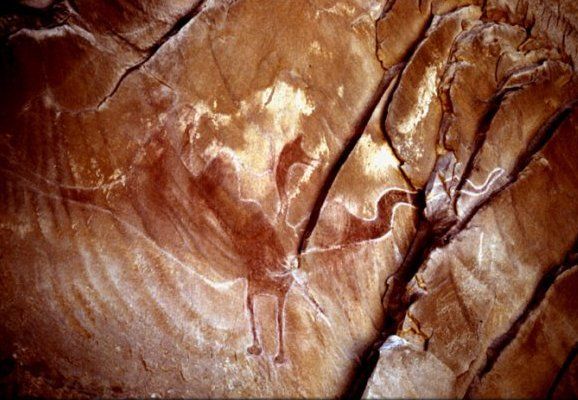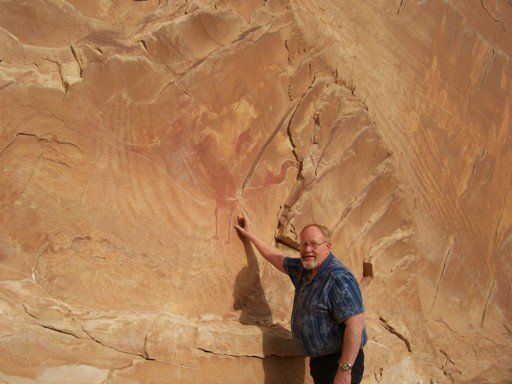NATIVE AMERICAN DINOSAUR ROCK ART


WHAT DID THE NATIVE AMERICANS SEE THAT WE DON’T SEE TODAY?
Over 1,000 years ago, Native Americans called Anasazi made pictures of dinosaurs on rocks found in numerous locations of North America. They are fascinating pictographs and petroglyphs and tell an amazing story!
Dinosaur Rock Ark:
The petroglyph above was discovered at Bridges National Monument in Utah. With it’s long neck and small head, it looks very similar to the Brontosaurus.
Petroglyph of what appears to be a dinosaur Edmontosaurus. Discovered in the Grand Canyon. This picture was taken in Grand Canyon. The petroglyph (carved rock drawing) was discovered in Arizona’s Havasupai Canyon. To the right is an artist’s depiction of the dinosaur Edmontosaurus.
Many ancient rock drawings depict strange, dragon-like creatures. Did they see things we don’t see today?
Pictured here is a close-up photo of one of the interesting “dinosaur” petroglyphs near Middle Mesa at the Wupatki National Park near Flagstaff, Arizona.
Petroglyphs are ancient figures carved into rock. They are preserved as permanent records of what the ancient artists must have seen.
Pictograph of what appears to be an ancient Stegosaur Dinosaur. This can be seen at Lake Superior Provincial Park in Canada.This pictograph (painted art work) is found at Lake Superior Provincial Park in Ontario, Canada. Notice how similar it looks to a stegosaur!
Enhanced picture showing the details of what appears to be a pictograph of a stegosaur dinosaur in Canada.
We need to remember that these rock pictures were made long before we had modern artist drawings of dinosaurs. There were no copies of National Geographic around to inspire the native artists!
FIRE BREATHING DRAGON?
This is an unusual and remarkable petroglyph of what appears to be a fire-breathing dragon: Dinosaur petroglyph at Wupatki National Monument near Flagstaff, Arizona.
Puff The Magic Dragon!
This petroglyph can be seen at the Wupatki National Park near Flagstaff, Arizona. It has been named “Puff, The Magic Dragon!”
Fire breathing dinosaur petroglyph at Wupatki National Monument near Flagstaff, Arizona.This particular petroglyph appears to be a depiction of a fire-breathing dinosaur. There is no certain way to date such petroglyphs, but it is believed to be as least several hundred years old. Did this Anasazi artist just have a wild imagination or did he see something that we don’t see in our world today?
Triceratops petroglyph discovered near Montrose, Colorado.Dr. Don Patton is shown here with an Indian rock art that he believes depicts a Triceratops dinosaur. This petroglyph (carving in rock) is in Montrose County, near Montrose, Colorado Notice the three horns on the head of the rock carving and how similar it is in appearance to what scientists now believe Triceratops actually looked like.
This rendering of Triceratops is remarkably similar to Indian rock art made hundreds of years ago by the Fremont Indians of the American southwest. This ancient petroglyph is attributed to the Fremont Indians who lived during the same time of the southwestern Anasazi.
According to the evolutionary timescale, triceratops lived during the cretaceous period which was supposedly 65 to 145 million years ago.
Native American rock art has been discovered on many canyon walls located throughout the southwestern areas of the United States. Many of the pictographs and petroglyphs are over 1,0000 years old and appear to depict dinosaurs. This raises several questions: Did dinosaurs still exist while men walked on planet earth. Did dinosaurs really live and become extinct over 65 million years ago?
